Tips for Loving a WFPB Diet
Tips for loving a WFPB diet (Whole Food Plant Based) is the art of finding tricks that will allow you to maintain it for the rest of your life.
It may seem so ridiculous after eating a diet full of meat and processed foods, but after seeing the awesome results like losing a few pounds (without even trying), or losing some aches and pains, you’ll be hooked. I know I was! Once you get it down to a science, it’s probably the easiest eating plan in the world! Besides that it is the coolest thing because you can go plant based in every culture, so you’ll never get tired of trying new things. So many cultures rely on spices and herbs which make their dishes memorable, and all these flavors totally fall under the whole foods gamut.
This is a guide with tips that I have used to make it work for me, so I hope you can use some of these tips for yourself.
First off, I just want to say that this lifestyle is going to be hard to maintain if you don’t like to cook or aren’t very good at it.
The second thing to keep in mind is that you are going to have to spend some extra time preparing your meals. So sharpen your knives, and get ready to learn a lot of new knife skills! It feels like I’m constantly washing a cutting board now.
You will want to put some time aside on the weekend to prepare some soups or stew, and cook some grains and beans to keep on hand for the week’s meals. And don’t forget to include sauces and salad dressings, they really make a meal!
Tip # 1
Keep it simple.
I have found that the fewer ingredients you mix together, the better it tastes.
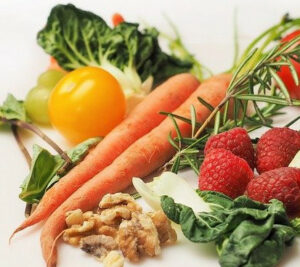
Let your fresh ingredients shine, and, it’s true, after a couple weeks, your taste buds change. You really begin to taste the true flavors of the vegetable or fruit.
One thing I have found to stay on track is to find some sauces and dressings that you can make and keep in your fridge for the week to quickly top your salads and main dishes. I am always looking for a yummy sauce. It just makes every meal more memorable and can take a “boring” veggie to the next level. Besides that, when you make the sauce with whole foods, you add tons of antioxidants and nutrients to your food!
Tip #2
Inflammation is the cause of most disease, so avoid ALL processed foods, limit adding salt, fat and sugar.
I was really hesitant on cutting back on salt, because it makes everything taste good, but now I hardly use it at all. I don’t cook with it anymore, and sometimes I’ll just put a tiny sprinkle of finishing sea salt on top of a dish just to enhance the flavors. Especially if it’s a dish that used to have cheese in it.
Oil is the other ingredient that I thought I just couldn’t live without. Boy, was I wrong! I saute in water or veggie broth now and I am working on baked recipes without added oil. I haven’t used oil in cooking now for about 7 months.
Sugar is probably the most difficult to avoid. I don’t avoid it completely, but I now buy organic cane sugar and I use that minimally. In baking, I mostly use maple syrup or dates. The down side to these two ingredients is that they are expensive. So I use them sparingly. I did find a less expensive bag of regular dates at BJ’s that I use to make date paste and to add to other recipes instead of Medjool dates, and to be honest, I don’t see much difference. Salad dressings usually taste better with a touch of sweetness.
“Side tip”, wet your cutting board and knife with water before chopping dates. They are so sticky! They won’t stick to you knife and this makes clean up a breeze. Just give them a quick rinse before cutting and they’ll clean right up afterward.
Tip #3
Start with a few recipes that you’ve liked as your main stays, and when the urge strikes, try something new.
Some recipes have so many ingredients, they may seem difficult for beginners. I stay away from recipes with grocery ists for ingredients, they take too long to make, and more times than not, they don’t come out very good anyway. Sometimes, I find that the long list is usually due to added spices, which can over whelm each other and make a dish taste muddy.
Keeping it simple may seem hard at first because there are so many cookbooks out there as well as other websites with recipes. This is where you can get overwhelmed and not know where to start. You’ll find yourself spending lots of time looking for a recipe. You really don’t need to make something fancy for every meal. One of my favorite meals is simply a grain, (brown rice or wheat berries for instance), cooked beans/tofu, a simple water/steamed veggie or medley, some salad greens, and a sauce to top the whole plate!
I have a couple favorite WFPB cookbooks, The China Study Cookbook, and The Plant Pure Nation Cookbook. I like these because they are tried and true recipes, which I give you as well. But I needed a place to start, and since I am still new to this, I refer to these often to get ideas when I have an ingredient that I want to use. Use cookbooks to get ideas and turn them into recipes of my own. Sometimes I have a veggie I want to use, and I just need an idea on how I want to cook it.
One fun thing I do is to take a recipe that I’ve enjoyed cooking in the past and turn it into a WFPB recipe. Whether it’s a vegan or a meat recipe, this is something you can do to Make it YOUR own!
As my motto goes, make it YOUR way and spice it YOUR way. Fortunately, spices and herbs are whole foods so all spices are totally allowed and they add lots of nutrients to this already healthy way of eating!
Tip # 4
Keep a spray bottle with water in it next to your stove to saute/steam veggies.
I find this a lot easier than trying to keep a bowl of water when I’m cooking as I tend to knock it over. Also, when you spray the veggies, they don’t get too much water and tend to saute better.
Tip # 5
Buy an Instant Pot. I use mine every day, more than once a day. 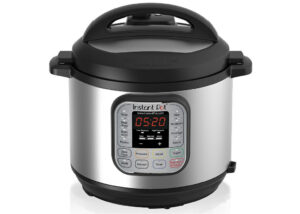
I don’t like leftover rice and grains. In my opinion, they lose their pizzazz if you put them in the fridge. The only exception to that is if it’s mixed into a dish like rice pilaf or jambalaya, then it reheats usually better the next day. I just don’t like plain old’ refrigerated rice. To get around that, and I am the only one in my household that eats WFPB, so I cook a single serving of whatever grain I want, when I want it in my Instant Pot. Use a ceramic bowl that holds just enough for a single serving and use the pot in pot method of cooking. I will go into more detail on that later. This also works great with portion control as you can measure just one serving. I also use this method to cook my oatmeal in the morning, so you see? Already I’m using it at least twice in one day!
The other thing is to use it for cooking your beans. You can just throw them in and let them cook, no watching a pot boiling over, and it’s done in no time. I have graduated to cooking my own beans from dry, rather than buy canned. I keep them in a jar in the fridge in their cooking liquid. This make it easy to just throw a handful of beans on top of a salad or veggie to add fiber and protein easily. It’s a no brainer.
I always soak my beans overnight, by the way, and cook them with a pinch of baking soda and a small piece of kombu. They say you don’t have soak them with an IP, but I don’t think they cook properly. The baking soda aids digestion and gas problems, in case you were wondering, and the kombu adds minerals like iodine that you don’t get much of on a vegetarian diet. You can either throw it out after cooking your beans, or cut it up and mix it back in.
The Instant Pot is also so easy to steam vegetables.
Tip # 6
Get a blender and a food processor.
I’m a fan of NutriBullet. I have the blender combo as well as a regular Nutribullet. Use it at least once a day. It makes salad dressings a breeze to whip up and blends cashews and nuts into a smooth sauce.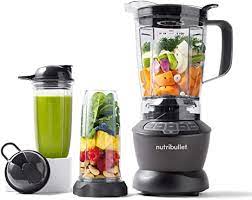
A food processor probably isn’t a necessity, but it comes in handy for veggie burgers and baked goods. I would say if you are budgeting your money, go with the NutriBullet.
Tip # 7
Make homemade veggie broth.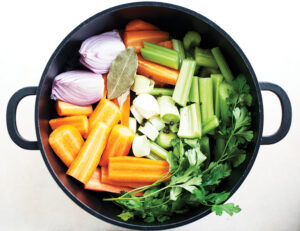
Now that you have all these fresh fruits and veggies, you also have a lot of waste. I grocery shop once a week, so on that day, I also weed out (no pun intended) my fridge of older veggies that are still usable, just not that great. I also keep onion ends. Coarsely chop them, and throw them in my InstantPot and make veggie broth. 15 minutes is all it takes, let it cool, and strain out the solids.
I felt I had really graduated up a level the day I made my first broth.
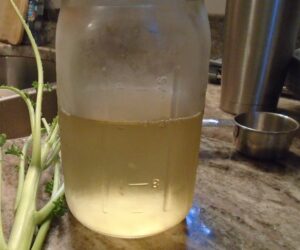 I was proud of me! So I keep a mason jar of broth in my fridge, and I also freeze some in ice cube trays and once they are frozen, I transfer them to a freezer bag and use them for a quick saute. Any time I have a recipe that calls for oil, I just substitute my broth!
I was proud of me! So I keep a mason jar of broth in my fridge, and I also freeze some in ice cube trays and once they are frozen, I transfer them to a freezer bag and use them for a quick saute. Any time I have a recipe that calls for oil, I just substitute my broth!
I also grow and buy fresh herbs, which are hard to keep fresh. For instance, I minced some dill and cilantro, (not together, although you can do anything you want), and put them in ice cube trays, added broth and froze them. Now I have instant flavor bombs to add to anything!
Tip # 8
Compost your waste!
We’ve figured out how to use some old veggies, but what to do with everything else?
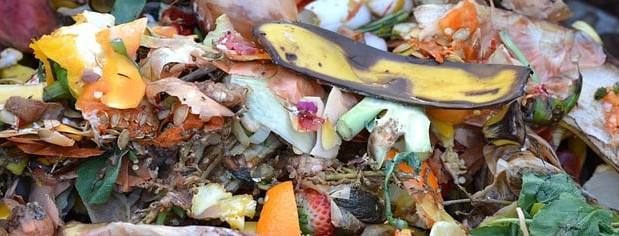
You are going to have a lot of food waste. Stems and peels and such. Even if you don’t have a garden, you can grow veggies in pots with the same results. Dirt is expensive, so you can make your own.
I started out with a homemade plastic bin with a lid (the kind you store clothes in). We drilled a few holes in the sides and bottom. It worked, but I found it to be kind of hard to mix and I had to put a heavy rock on top to keep out the critters.
I didn’t think it worked very well, and it was not user friend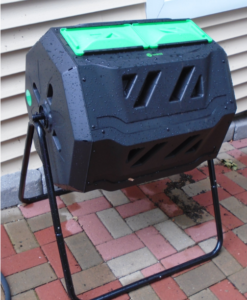 ly.
ly.
So I bought one of those composters that you can rotate and it holds a ton more. Actually, the one I bought has two sides, so you can have one side ready to use while adding fresh stuff to the other side to compost. It’s pretty cool!
You don’t want to put all that waste in your trash, although you can, but it harms the landfills and ozone.
I also like this idea that I got from Ocean Robbins, (if you have the land). Dig a ditch somewhere on the edge of your property, and fill it with your kitchen scraps, burying it as you go to return the waste to the earth. This is my favorite compost idea and I would definitely do this if I had the land. Some cities have a compost company that will pick up your scraps for a fee, check out your area.
Tip #9
Buy a set of strainers.
I use this simple kitchen gadget everyday. I actually can’t believe how often I use a strainer. I found a set of three different sizes and I am constantly using them. You need a strainer for rinsing beans, and grains, especially quinoa and lentils. I always rinse my soaked cashews when making sauces and dressings too. Sifting flour when making baked goods is a must for vegan baking as it helps to keep the final product light.
Tip # 10
Make your own plant milk.
There are many ways to do this. I have an Almond Cow which is an automatic grinder and strainer. It makes wonderful plant based milk from any grain or seed. you can also use it to make fruit drinks, broth, cider, you name it, it’ll probably do it. Check out my Almond Cow review for some more information on that.
You can always do it the old fashioned way and blend your soaked nuts and use a nut bag to strain out the solids.
That’s all for now, I will be updating this page as I come up with new amazing tips and tricks to share. Please check back often!
